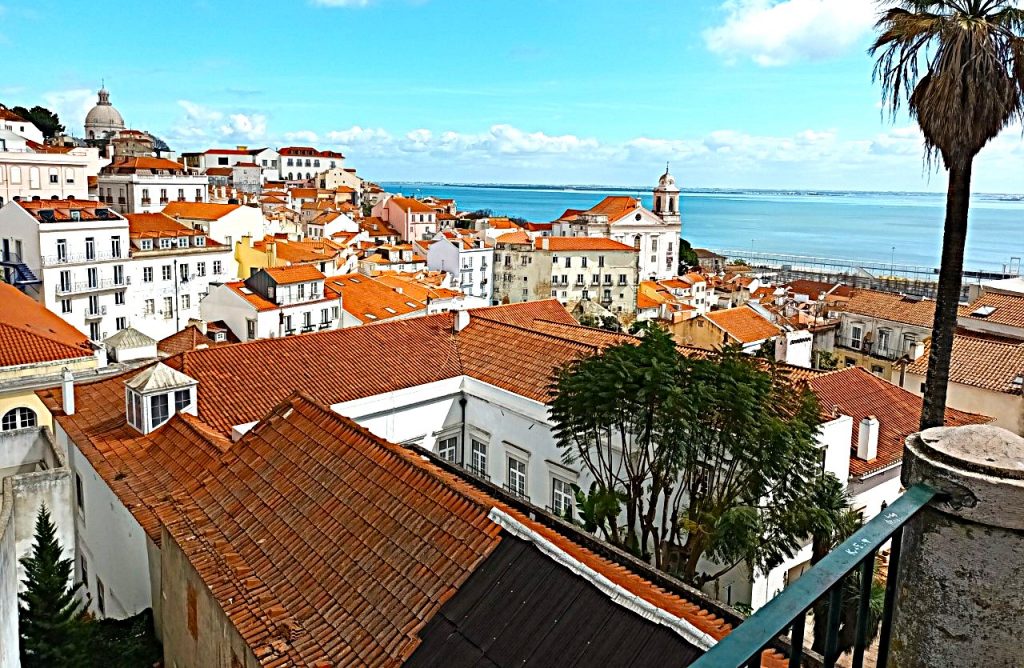
If Jews had to flee the city in the 16th century, Lisbon was also the city that welcomed Jews fleeing the Spanish Inquisition or the transit of Jews fleeing Nazism to the American continent. But since the turn of the 21st century it has been experiencing a renaissance of its Jewish life.
In December 2024, a ceremony was held in Lisbon in memory of the boat Serpa Pinto, which transported many Jewish refugees during the war. The ship made many round trips, financed by the JDC, to rescue Jews and enable them to reach the United States or Central and South American countries, sometimes opening their doors. A plaque was unveiled in the presence of Portuguese political representatives, including the mayor of Lisbon, Carlos Moedas, and Rabbi Eli Rosenfeld. Among its passengers were the famous Rabbi Menachem Schneerson and his wife Chaya Mushka, who fled France in 1941 to reach New York.
On one side there is the sea and on the other the river. Frequent trips, recent returns, telling a thousand years of fascinating Jewish history, mainly in one district, Alfama and others that we take you to visit for two and a half magical days in Lisbon…
Day 1 Alfama
In Lisbon’s main square, Sao Domingos, is a church and a theatre. The church where the massacre of converted Jews began in 1506. Two thousand victims in three days. A monument in the square commemorates this tragedy today. And next to it a Wall of Tolerance, which celebrates this value in all languages. The great Dona Maria theatre was for three centuries the seat of the Inquisition. But for half a century, culture and sharing have been taking precedence in Portugal over religious withdrawal.
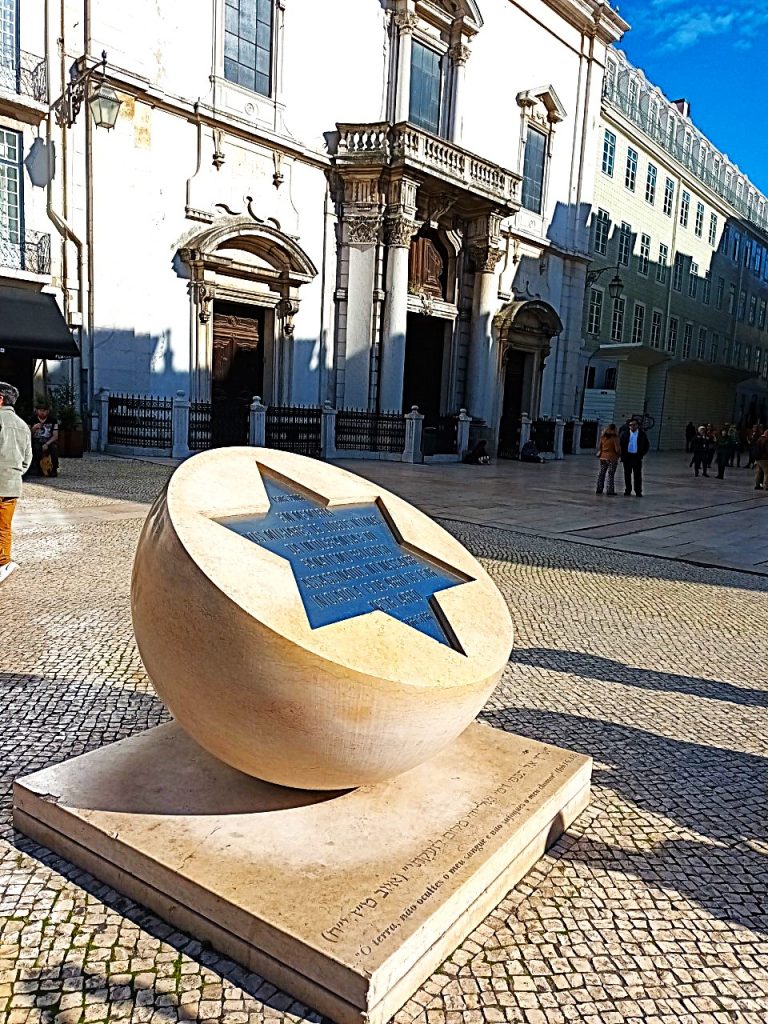
Sharing steps between citizens and tourists as you walk down the sublime rua Agusta to its Triumphal Arch, where since 2013 you can climb up to enjoy a magnificent view. And a little further down, the equally beautiful Praça de Comerio with its saffron yellow buildings.
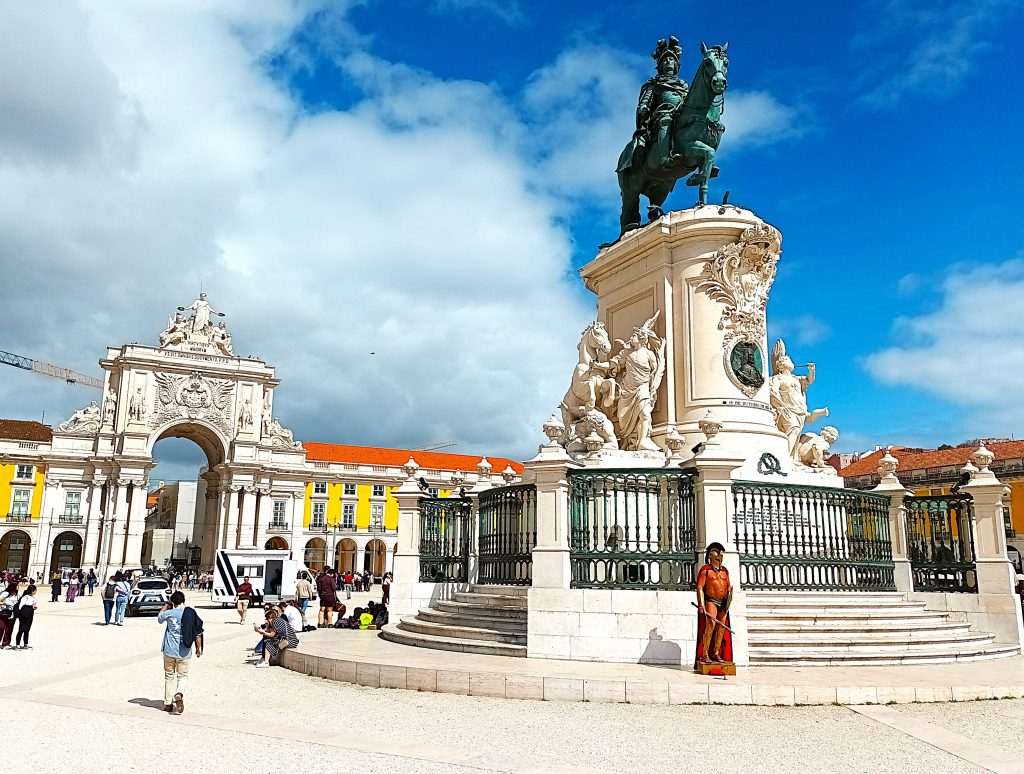
Then, we go a little east of the Alfama district, towards the rua da Judiaria. Before the forced conversion (1497), Lisbon had 3 judiarias, Jewish quarters, not ghettos, located in the middle of the old city. On your way there, you must pass by two interesting places.
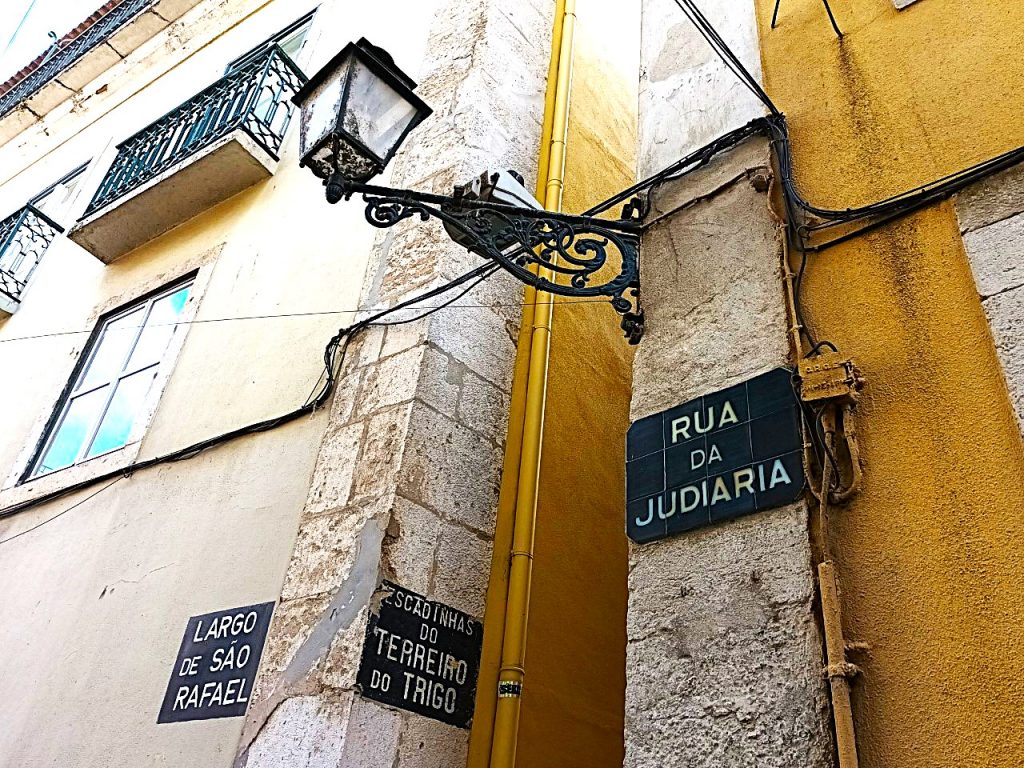
First of all, a house that bears witness to this period, with stones cut into diamond points. Today it houses the foundation of the author José Saramago, who has dedicated a book to the Inquisition. The second place to visit is the Sé Cathedral, the oldest religious monument in Lisbon. The interior is particularly amazing with its Romanesque, Gothic, Arab and Baroque artistic influences.
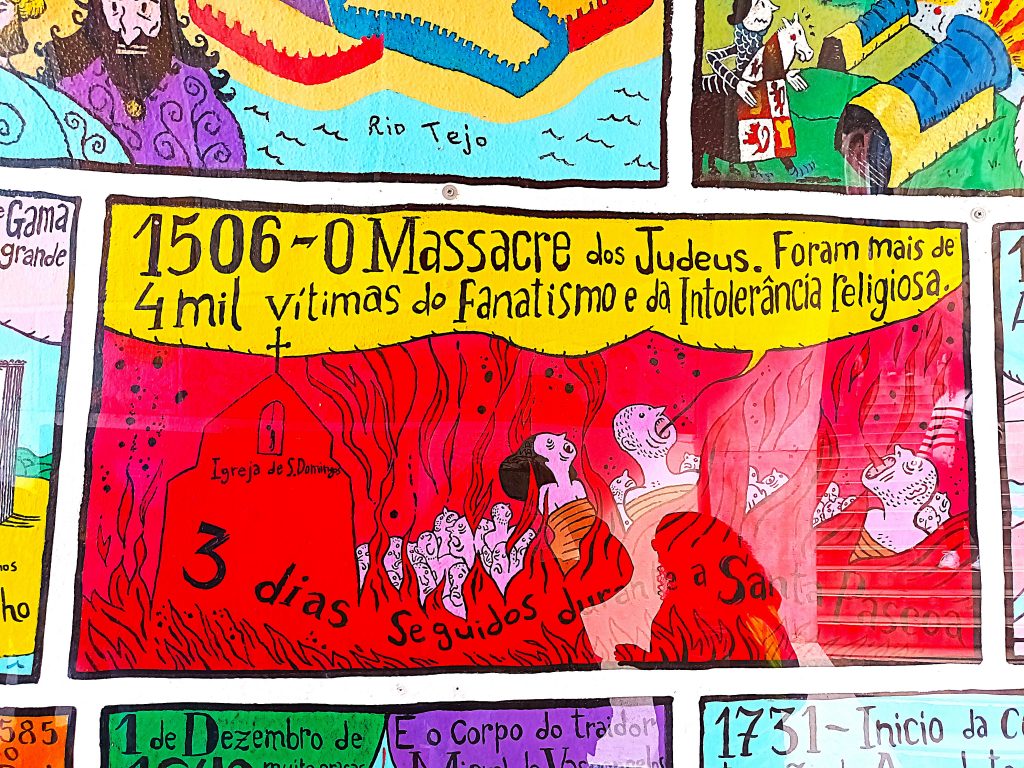
During the forced conversion, the synagogues were reallocated or demolished. The same applies to the shops supplying kosher or cult products. There are therefore few traces of what the old quarter was like. Nevertheless, Portugal continues its efforts to enhance the Jewish cultural heritage today. This has not prevented some slight historical errors.
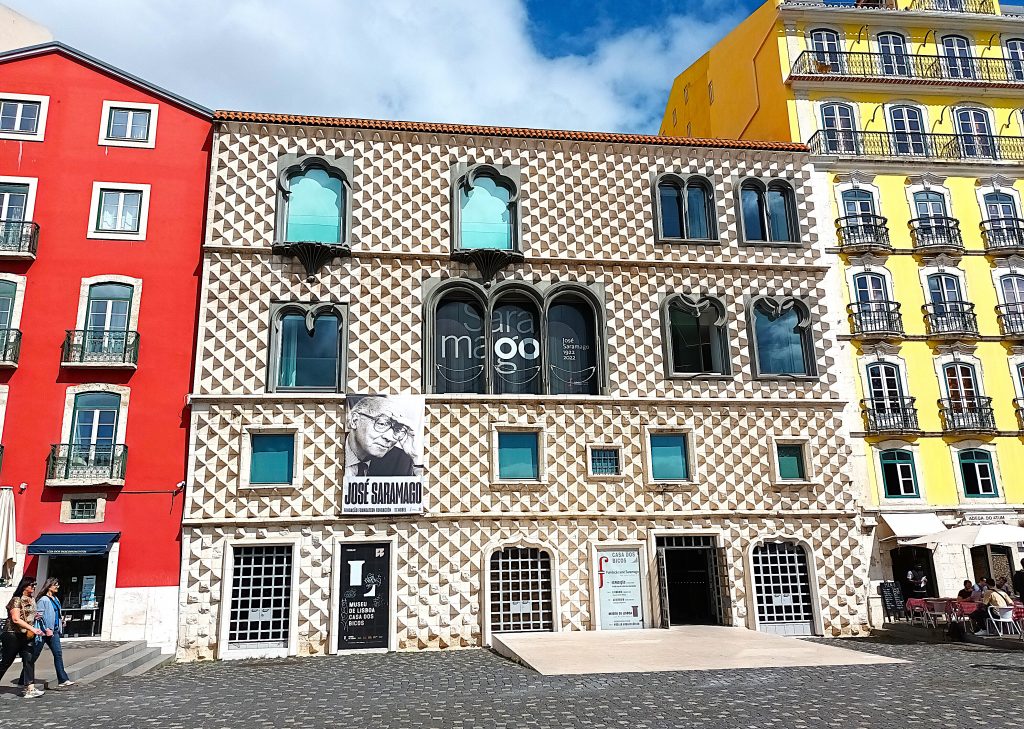
For example, the large synagogue, located in the middle of the district, was given to a Catholic religious order. The building was demolished in 1755 and the order moved to another church. Thus, a small error of tourist indication, a plaque on the Manuelian portal, symbol of the Portuguese renaissance, indicates the former location of the synagogue in this second place where the Christian order was reinstalled.
The Alfama district is also the cradle of fado, with its museum, which we recommend you visit. For its comprehensive permanent exhibition, but also for the amazing inspirations of this music. In 2012, during a European tour, Leonard Cohen told a Portuguese journalist that he had always loved fado and that one of the first albums he bought was by Amalia Rodrigues. A visit to Alfama is all the more urgent as few traces of these references, both Jewish and artistic, remain since the massive urbanisation encouraged by foreign investors, notably French. The small streets and stalls with local sardine dishes at two euros have been replaced by avenues and large restaurants catering to new demands and airbnb vacations.
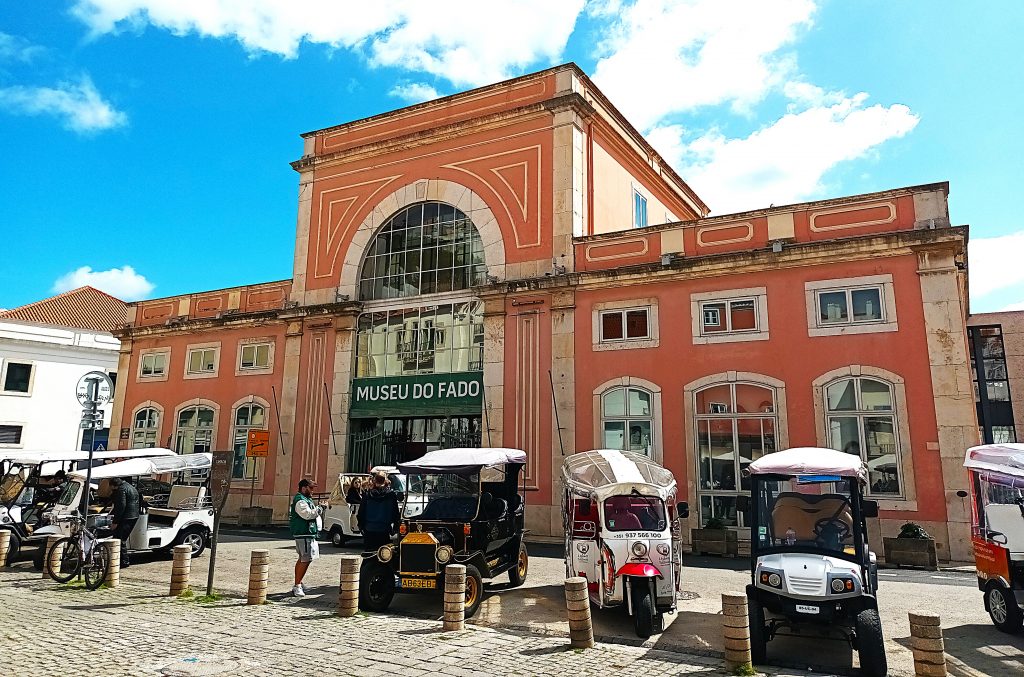
Heading northwest, we recommend a visit to another museum, the one dedicated to decorative arts. This former palace, bought by the collector Ricardo do Espirito Santo Silva, now presents many local and international works. A variety in space and time, with different periods in the spotlight. And to close the day, the inevitable Saint George’s Castle, located near the museum. Formerly a witness to a violent history, it will motivate you today with its unbeatable view and its sublime walks.
For dinner, we recommend the Barrio de Avillez. A place that offers several atmospheres, tavern, pizzeria, bar, where you can savour the freshness of the sea.
Day 2 Campolide and Alcantara
On this first part of the day, we invite you to visit Lisbon’s two existing synagogues and other places of interest along the three-kilometre route that links them.
The Ohel Jacob Synagogue was founded in 1934 by Ashkenazi Jews from Central Europe. A time when the majority of Portuguese Jews were Sephardic. The synagogue also has a small museum presenting its history.
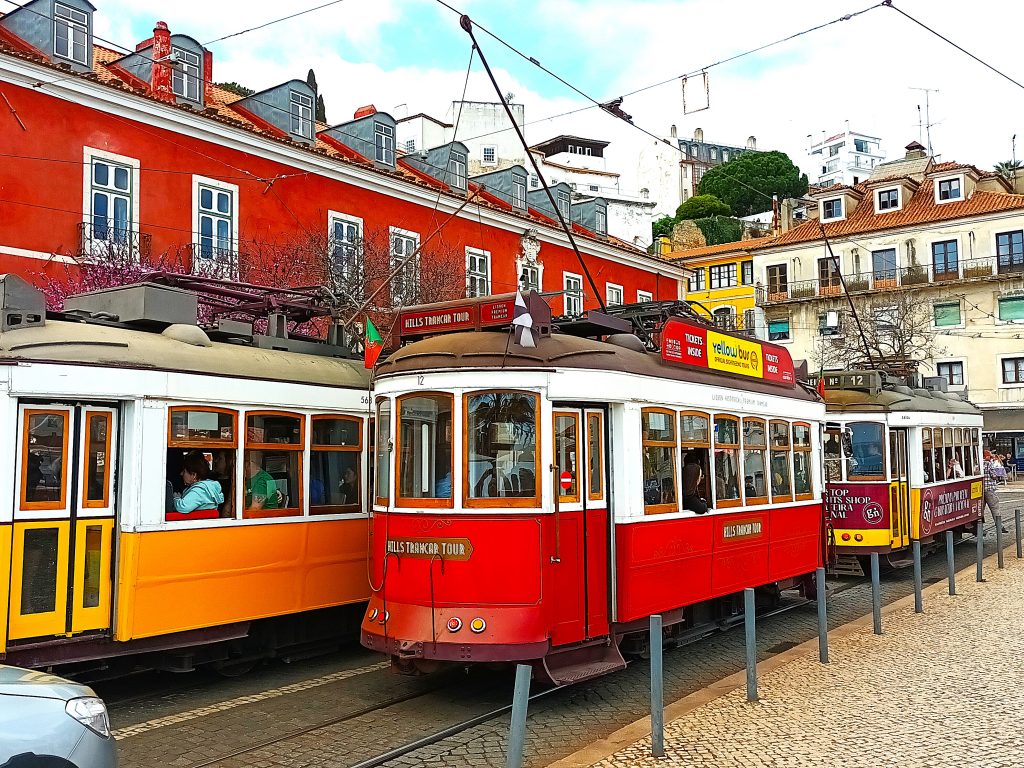
You then walk down av. dos Combatentes to the Fundaçao Museu Calouste Gulbenkian. Many works of art are presented in this place, which has been a symbol of curiosity and commitment since it was created during the Salazar era. A visit that continues with its gardens, which also host major cultural events.
Just 200 metres to the south, taking the Marques de Fronteira street, the open-air visit continues at the Parque Eduardo VII. Then cross the Marques de Pombal square to the south of the park by taking rua Braamcamp to arrive on calle Alexander Herculano. This street is named after the historian who wrote about Jewish life.
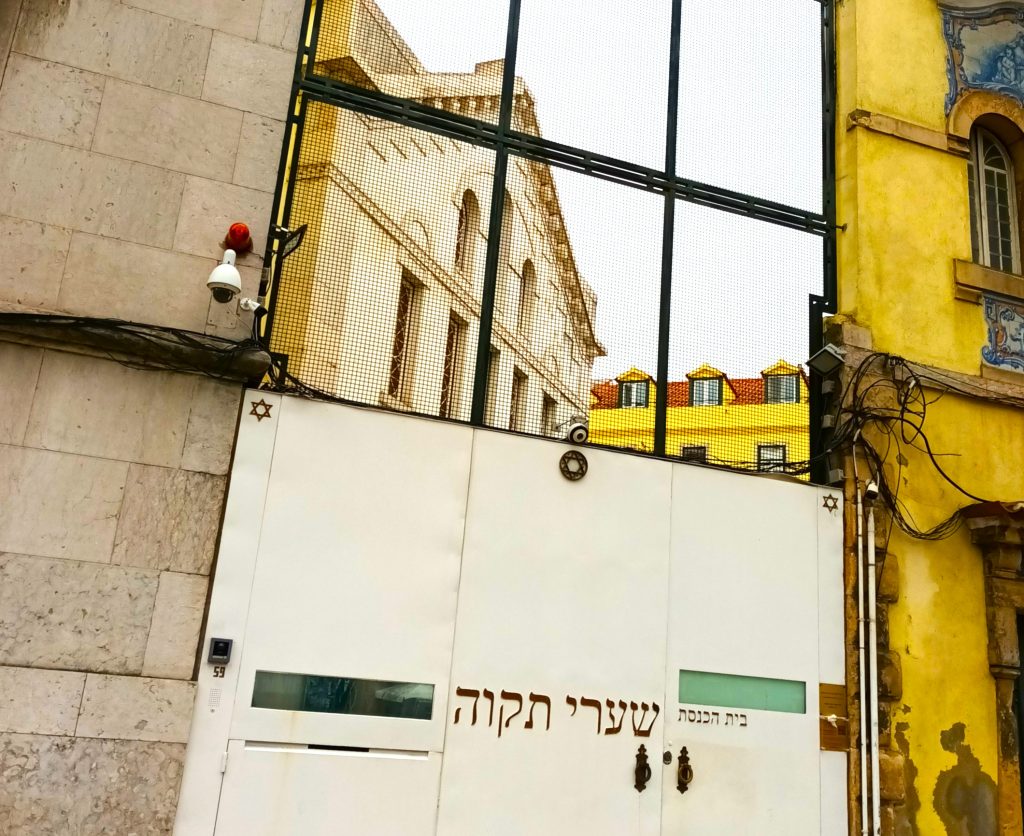
On this street you’ll find the Shaare Tikva synagogue. It was opened in 1904, following the abolition of the Inquisition and the timid return of Jews from Gibraltar and North Africa. A discreet synagogue in conformity with the state’s will.
After the gardens, the beaches for this day which will make you doubt, like the actor Jean-Paul Belmondo facing Jean Gabin in the movie “A Monkey in Winter”, on the welcome that a monument reserves for the surrounding nature or the opposite. But before collecting alcoholic shellfish, head to Alcantara, a 10-minute drive or 20-minute bus ride from the synagogue.
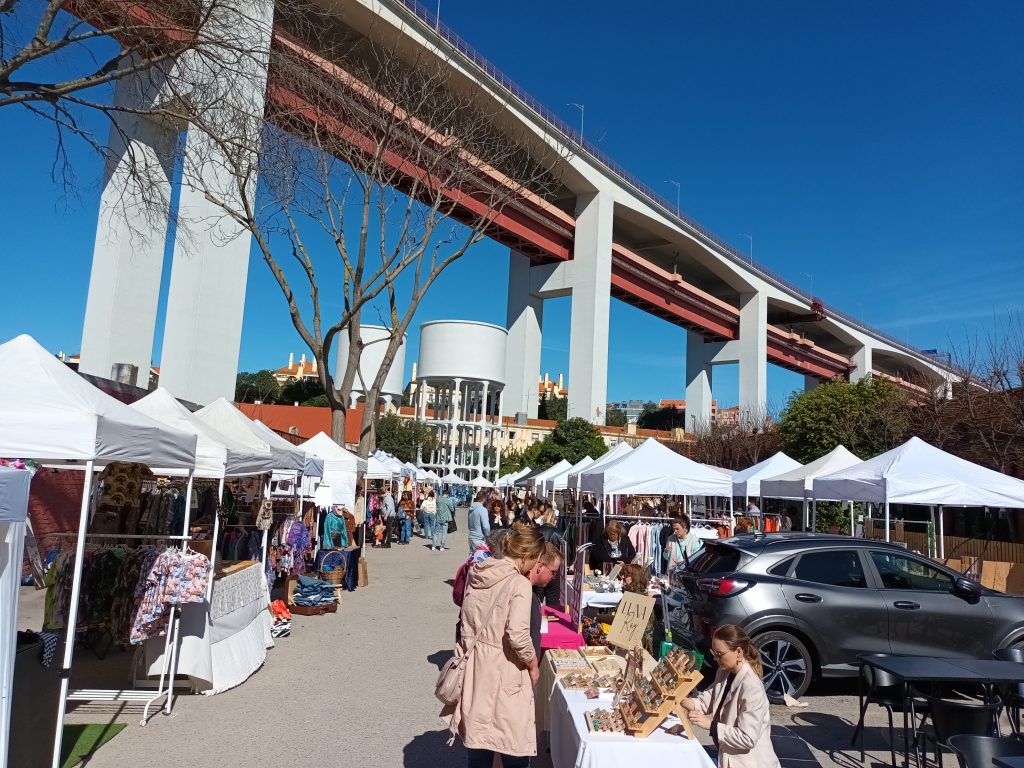
This area is home to some of the city’s best bistros and many shops, especially around the LX Factory. Take your time and enjoy walking around Alcantara, leaving maps and compasses behind. Most of the establishments did not exist a few years ago. So, if the old Alfama district has been ravaged by concrete that eats up the grass and the old stones, real estate and cultural creativity has transformed Alcantara to our great delight.
Our favourite is the Ler Devagar bookshop. This former printing house has been transformed into a huge bookshop and is a beautiful and inspiring setting. Its name, “ler devagar”, means “to read slowly”. What a program. You can also eat here.
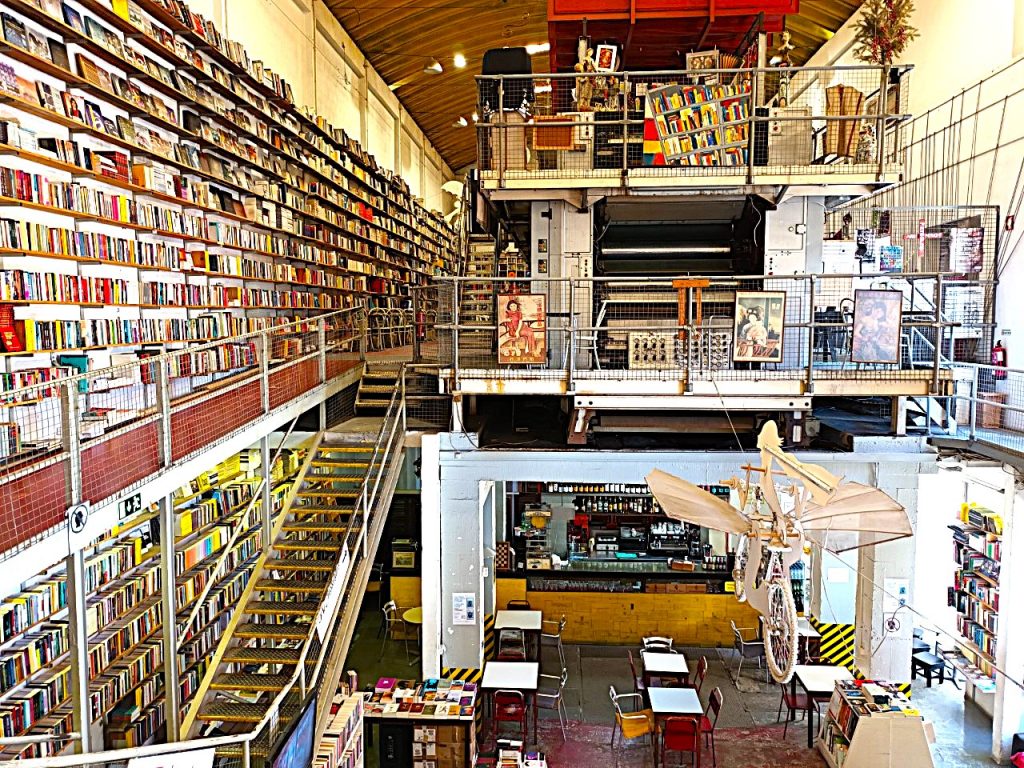
And if your legs allow it and your stomach recommends it, a walk along the beaches at the end of the day is ideal. The restaurants and docks will serve as a stopover for elbow-lifters.
Among the places we recommend for dinner, along the docks you will find the restaurant Le Chat with its varied dishes from the seabed or the Journalists Club in a cosy atmosphere with its risottos and ceviches.
Day 3 Belem
A Jewish Museum, Hatikva, is currently under construction by the great architect Liebeskind. A site in Alfama was planned, but in the end it will be located in Belem, the district of the museums and the largest monastery in the city, the Hieronymites. But before visiting this Manuelan monument, a visit to the famous pastry shop in the neighbourhood, “Pastéis de Belem”, is a must. Large rooms welcome customers in a sumptuous setting, ideal for savouring the specialities, the azulejos.

After visiting the monastery, you will find the Vasco da Gama garden opposite. Abraham Zacuto created astronomical tables with Hebrew characters, facilitating the journey of Vasco da Gama and other explorers. A painting pays tribute to this historical contribution.

To the south of the garden is the iconic Monument of Discoveries. Built in 1940, it celebrates the 500th anniversary of Henry the Navigator. It was here that Vasco da Gama embarked. Another emblematic monument that will punctuate your stay is the Belem Tower, located just a kilometre to the east. Built in the 16th century, it served as a sentry and will ensure that your stay ends happily…
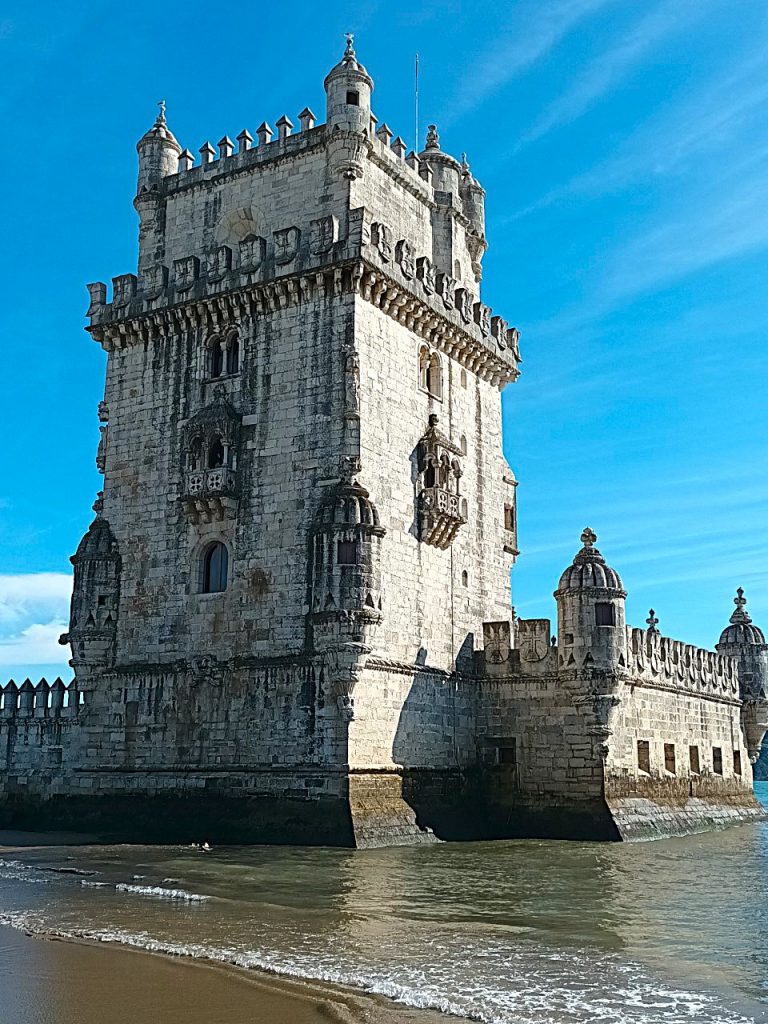
Interview with Esther Mucznik, Chair of the Hagada Association, in charge of the Tikva Jewish Museum of Lisbon
Jguideeurope: In the presentation of the future museum, you highlight both the Portuguese and the Jewish dimension. What were the main Jewish contributions to the culture and history of the country?
Esther Mucznik: Like many other museums, the Tikva Jewish Museum in Lisbon tells a story, the story of Portuguese Jews, from its documented presence in Roman times until today. Contrary to the stereotype that Jews are a people apart, foreign in some way, our aim is to demonstrate that it is as Portuguese of the Jewish faith that they contribute to the nation to which they belong. This contribution has been extremely important throughout the centuries and continues to be so. But it must be understood that this contribution takes place especially during those moments in history when national interaction and even relative freedom were possible.
This was the case in the Middle Ages, between the twelfth and fifteenth centuries, when Jews were the doctors and financiers of kings and nobility. When they were able to play a fundamental role in what is now called “Portuguese expansion”. As financiers, but even more so as astronomers, diplomats and interpreters, thanks to the many languages they mastered. In the field of culture, it is worth remembering that it was the Jews who introduced printing to Portugal. The first book printed in the country was the Pentateuch in Hebrew, in 1487. During the 15th century, there were three printing houses in Portugal (in Lisbon, Faro and Leiria), as well as a workshop of copyists and illuminators that produced superb manuscripts. This contribution does not stop in the Middle Ages. It continues in the Diáspora on a global level following forced conversions and the installation of the Inquisition in the 16th century, and continues in Portugal after its abolition to the present day.
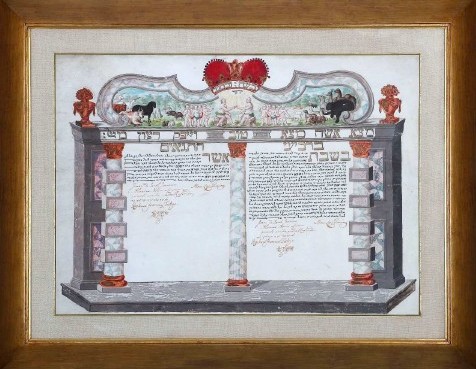
David Harris, former CEO of the American Jewish Committee, has made a moving personal video, posted on your website, about Portugal’s role in saving Jews during the war. Can you tell us a little more about this role?
From 1933, the first waves of refugees from Nazism arrived in Portugal, mainly Germans. That same year, the Zionist youth organisation “Hehaver” created COMASSIS, the Portuguese Commission for Assistance to Jewish Refugees, chaired first by Adolfo Benarus and later by the doctor Augusto Esaguy. COMASSIS, which existed until 1941, played a decisive role throughout its eight years of existence. In particular, it received support from the Israelite Canteen and the Israelite Hospital, and managed to obtain material subsidies for its work from HICEM and JOINT. These American Jewish refugee aid organisations covered the refugees’ travel and living expenses.
It was also COMASSIS that obtained from the Portuguese authorities the authorisations for the establishment in Portugal, after the fall of France, of JOINT and HICEM, allowing them to carry out their charitable activities in Portugal.
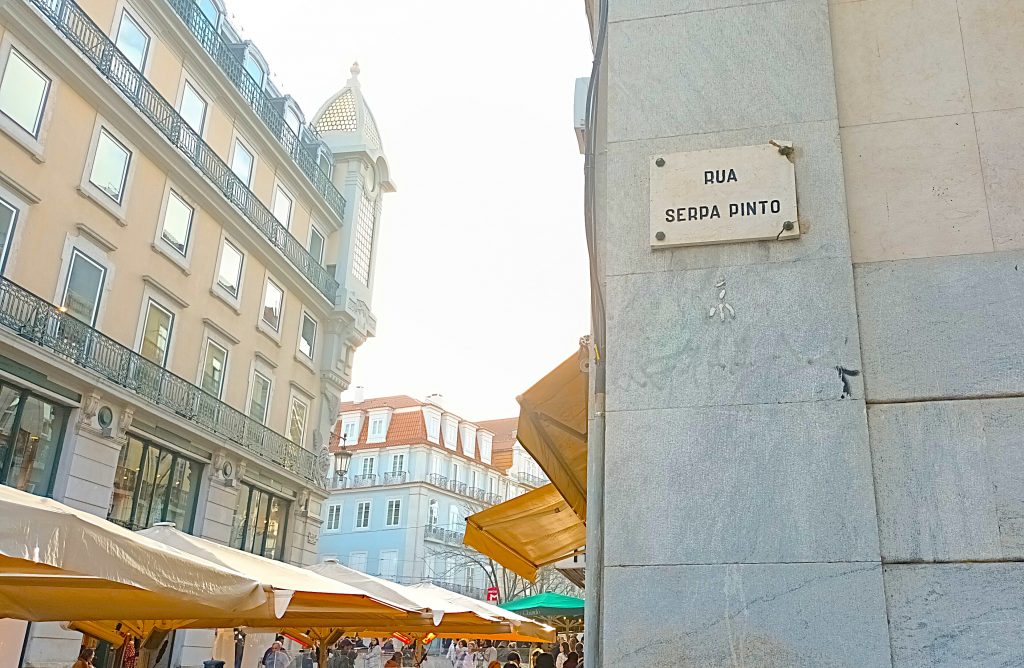
With the entry into the war in 1941, the United States lost its neutrality and the two American organisations were forced to leave Portugal. From then on, thanks to his fame and credibility, the president of the Israeli Community, Moisés Amzalak, already vice-rector of the Technical University of Lisbon, author of numerous bibliographies and, importantly at the time, enjoying Salazar’s trust, directly assumed, with the agreement of the directors of JOINT and HICEM, the aid to the refugees through the Community’s structure. Thus, the Refugee Assistance Section of the Lisbon Jewish Community was created, headed by the doctor Elias Baruel, vice-president of the Community, which operated until the mid 1950s.
Also, from a religious point of view, the Community provided devout Jews with the necessary books and utensils for prayer in the areas of fixed residence where they were confined by the State. Although small, the Jewish community in Lisbon played an important role in supporting and welcoming refugees. Composed of doctors, lawyers, teachers and businessmen, well integrated into Portuguese society and led by a man who enjoyed the confidence of the authorities, the community put these characteristics at the service of those persecuted by Nazism, helping to save thousands of people.
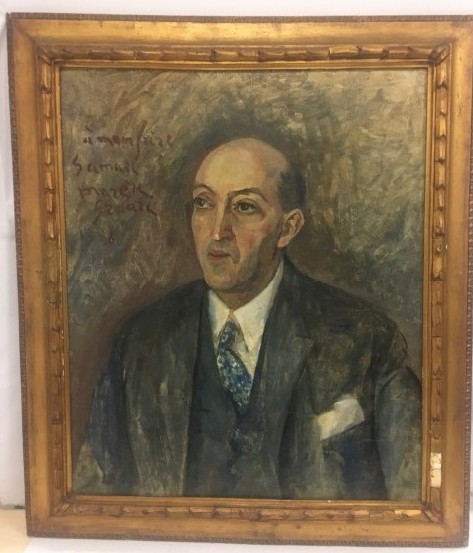
As Tikva means “hope”, and therefore hope for the future, what kind of educational projects are planned for the youth?
First of all, young people need to know what Judaism is, because the communities in Portugal are small and do not have the visibility necessary to make themselves known. Ignorance is the most fertile ground for stereotypes. There is also the music that is important, as well as the Jewish holidays with their culinary traditions. Not forgetting of course the great dates in history. Of course we will use new technologies to make each project clearer and more attractive. But everything depends, among other things, on the age of the young people and the professional quality of the person responsible for the educational service. There is still a lot of work to be done on this.